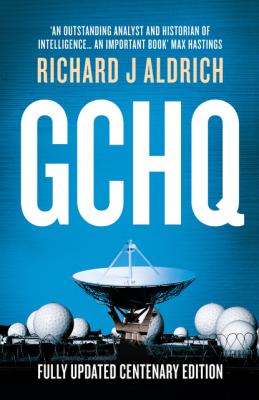ТОП просматриваемых книг сайта:
GCHQ. Richard Aldrich
Читать онлайн.Название GCHQ
Год выпуска 0
isbn 9780007357123
Автор произведения Richard Aldrich
Жанр Биографии и Мемуары
Издательство HarperCollins
23. From Cold War to Hot Peace – The Gulf War and Bosnia
24. The New Age of Ubiquitous Computing
25. The 9/11 Attacks and the Iraq War
27. Who left GCHQ’s backdoor open?
28. Deny / Disrupt / Degrade / Deceive
Appendix 1: Directors of GCHQ and NCSC
Appendix 3: GCHQ Organisation in 1946
Appendix 4: GCHQ Organisation in 1970
Appendix 5: GCHQ Organisation in 1998
Alastair Denniston. (US National Archives and Records Administration)
Edward Travis. (US National Archives and Records Administration)
Voice interception during the Second World War. (US National Archives and Records Administration)
Arlington Hall, where Venona was broken. (US National Archives and Records Administration)
UKUSA meeting in the early 1950s. (US National Archives and Records Administration)
Russian radio equipment captured in Korea, 1951. (US National Archives and Records Administration)
President Sukarno of Indonesia, whose ‘Konfrontasi’ was defeated with the help of British sigint. (US National Archives and Records Administration)
British phone-tapping equipment from the 1950s. (US National Archives and Records Administration)
George Blake. (Imperial War Museum)
Tony Beasley. (By permission of Tony Beasley)
HMS Turpin. (Royal Submarines Museum)
A Russian sigint ‘trawler’ in the North Sea. (UK National Archives)
The cypher room of Britain’s Embassy in Peking after it was overrun by ‘protesters’ in 1967. (UK National Archives)
Clive Loehnis. (National Portrait Gallery, London)
Commander Robert ‘Fred’ Stannard. (Imperial War Museum)
The Blue Peter team admire Britain’s first Skynet communications satellite in November 1969. (UK National Archives)
Sigint operators at RAF Chicksands in Bedfordshire listen in to the Soviet Air Force. (US National Archives and Records Administration)
Benhall, one of the two GCHQ sites at Cheltenham in the 1970s. (Gloucester Citizen)
USS Oxford, one of America’s spy ships. (US National Archives and Records Administration)
US President Richard Nixon and CIA Director Richard Helms. (US National Archives and Records Administration)
An American SR-71 Blackbird spy plane at RAF Mildenhall, October 1973. (US National Archives and Records Administration)
Bodies of some of the kidnappers after the shoot-out at Kizildere in March 1972. (By permission of Batu Erkan)
The Mayor’s house at Kizildere after the siege. (By permission of Batu Erkan)
HMS Endurance during the Falklands War. (US National Archives and Records Administration)
HMS Conqueror after sinking the General Belgrano. (Imperial War Museum)
Geoffrey Prime. (Imperial War Museum)
Benson Buffham. (US National Archives and Records Administration)
GCHQ protesters in Cheltenham in 1984 after the trade union ban. (Gloucester Citizen)
An ‘Odette’ intercept unit during the Gulf War in 1991. (MoD/Royal Signals Museum)
A supporter of the Anonymous group holds up a placard featuring a photo of Edward Snowden during a rally in Berlin, November 2013 (Getty Images)
‘The Doughnut’. (© Topfoto)
On 1 November 1919, Britain created the Government Code and Cypher School, or ‘GC&CS’, the nation’s first integrated code-making and code-breaking unit. The term GC&CS remained in widespread use until the end of the Second World War.
By contrast,

